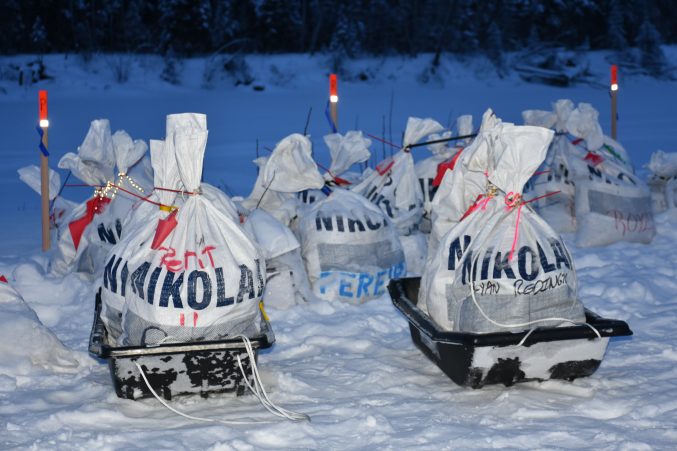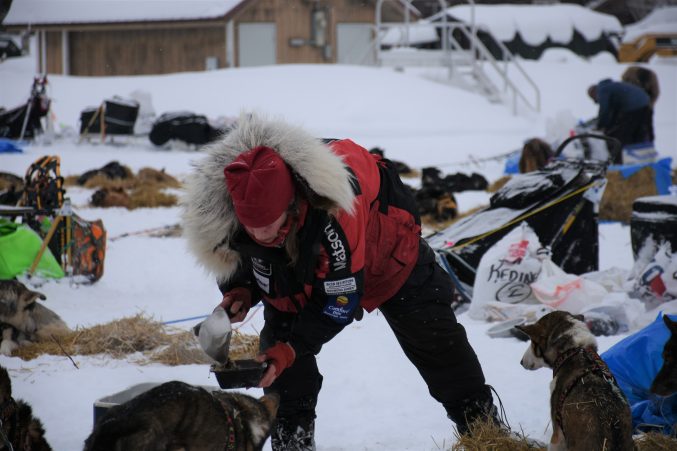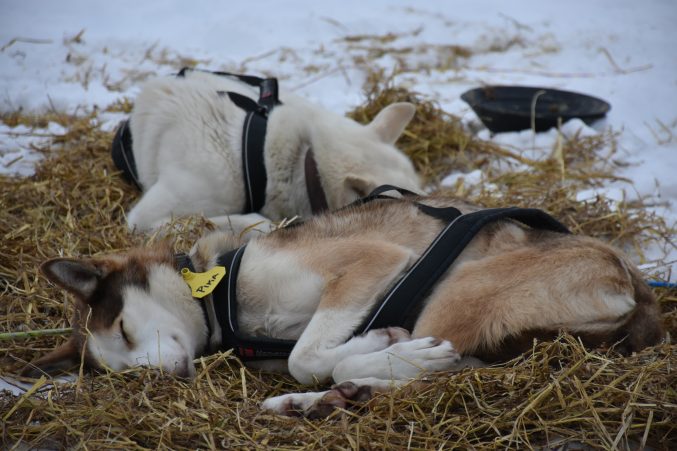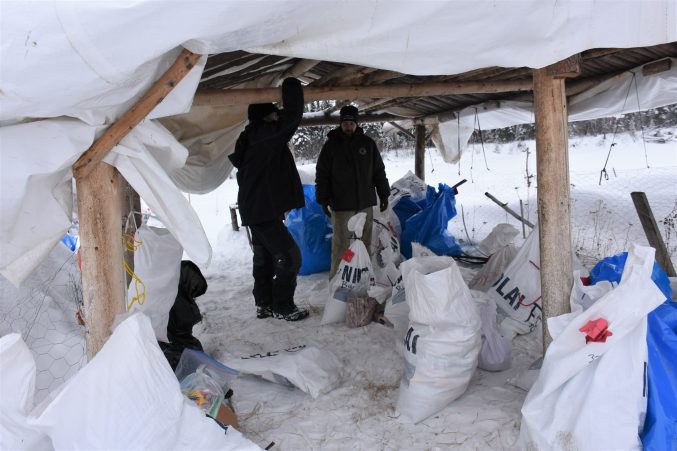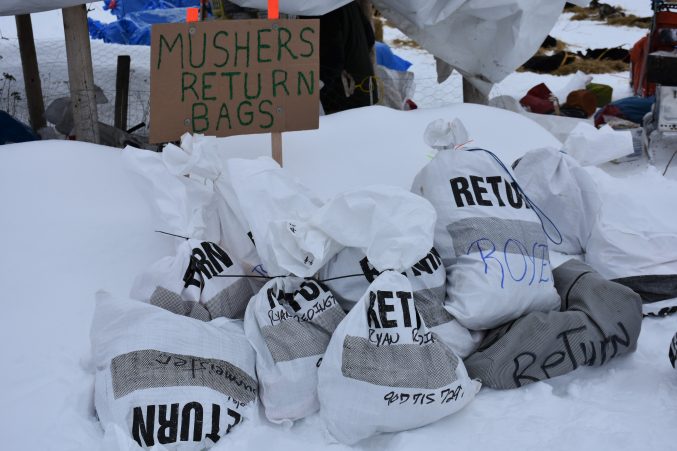Paws Along the Trail with Drop Bags
Weeks before the start of the Iditarod, mushers are busily planning and packing drop bags. A maximum of three 50 pound bags are flown out to each checkpoint. Mushers have marked the bags with the checkpoint name and their names. These have been stored here in Nikolai and were brought out and lined up in alphabetical order along the fence line, ready and organized for when the mushers arrive. One change this year is red zip ties on every bag to help prevent any tampering with the contents. The volunteers have sleds to transport drop bags as mushers arrive and park their dog teams. The contents were sometimes dumped onto the snow by mushers to sort through what was needed.
- Drop bags border the river as a team comes off the Kuskokwim River
- Early morning and the sleds are loaded in anticipation of the arrival of Nic Petit and Ryan Redington
This morning before dawn, volunteers were ready and waiting for the first musher to arrive. Nikolai provides hot water heated in wood-fired burners from water dipped out of a hole in the ice on the Kuskokwim River. Men from the village kept firewood chopped and the burners going. Buckets of river water were poured into the tops of two burners through a funnel. Spigots located on the sides allowed mushers to fill up their coolers or buckets.
From their drop bags, mushers retrieve kibble, a high-protein dog food. They dump the dry food into the hot water, sometimes add meat, and then slosh it out with a ladle into dog bowls. The dogs happily slurp up the warm, wet food. This, along with frozen snacks given to them right after arriving, fills their bellies, and they then curl up on their straw and fall asleep.
- Aliy Zirkle serves up warmed kibble to her team.
- Naptime!
Drop bags also contain musher food. I was in the school cafeteria when Aliy Zirkle came in and asked to use the microwave to warm up an English muffin sandwich she had sent ahead, frozen. Rick Casillo had some ziplock bags of snacks, but also enjoyed a hot bowl of the buffalo stew the village was offering all of the mushers. Mushers may pack extra wool socks, gloves, a new pair of boots, and other items in the bags.
Anything not needed at this time that is of value will be placed in a RETURN bag with the musher’s name. Mitch Seavey’s was pinstriped and easy to recognize. These will be flown back to Anchorage and then taken on to Iditarod Headquarters to await the return of the mushers. Anything else the mushers didn’t need was put under the tent. Kibble and meat snacks will be used to feed any dropped dogs until they leave. Other items, like a bag of candy I was eyeing, will be given to the village to use.
- Leftovers
- Return bags
Drop bags are an important part of the Iditarod, and there are many lessons that can go along with them. I’ve included an alphabetical order drop bag exercise for teachers. Alphabetizing in the Iditarod is a necessary skill when laying out drop bags. Drop Bags ABC order




